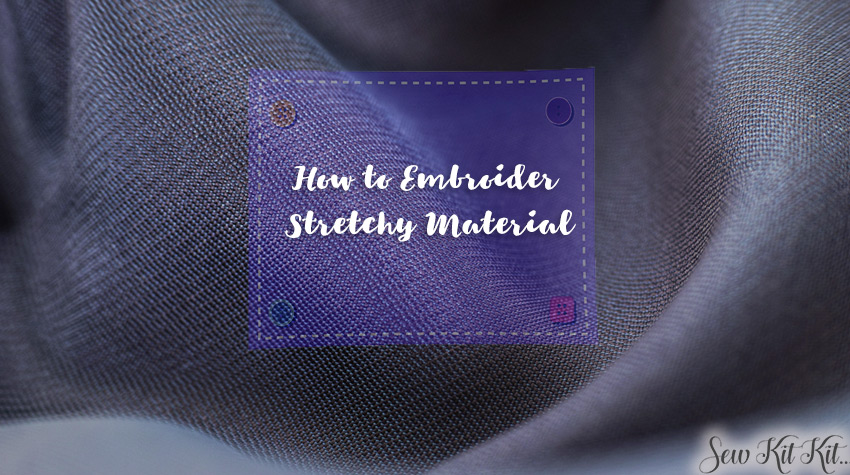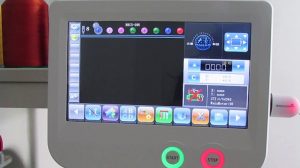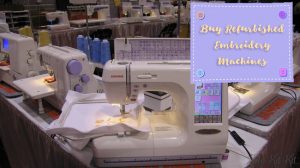Last Updated on May 10, 2021
The growing trend of stretchy “technical” fabrics in contemporary fashion is not going away anytime soon. Different manufacturers have developed their own styles and their own names, but the characteristic that makes them alike is the addition of spandex or similar material to the fabric’s blend.
The majority of high-end golf shirts are all tech fabric because of their increased flexibility and moisture-wicking properties.

How to Embroider Stretchy Material
Depending on the amount of spandex added, these garments will give you a little extra challenge in the embroidery process. With proper preparation and methods, however, you will find that they can be almost as easy as any other type of knitting. Choosing garments that will embroider well for you can be a tricky decision, and stretchy fabrics are close to the top of the list.
How to Embroider Stretchy Material | Before You Begin
Be sure to communicate with your customer about what designs will embroider best on these kinds of garments. Designs consisting of satin stitches with little or no fill stitches work best with the material’s flexible characteristics. Large full-back or full-front sized designs are a bad idea on items with a lot of stretches. Don’t forget to let your digitizer know too. Typically designs on stretchy material require less density to allow for more movement.
Hooping Technique
Hooping technique is critical to get a firm grip on a fabric’s slick surface. This can be done by wrapping the inner ring of your embroidery hoop. A good way to do this is by using cotton sports tape, like the kind hockey players put on the handles of their sticks.
This tape is only slightly tacky and will adhere to the hoop without leaving a residue on the goods in the hoop. There are other kinds of tape that will work equally well, but be careful of using a too-strong adhesive that can damage garments and leave a sticky mess when it is removed from the hoop.
Stabilizing
A good method to stabilize the material is to use one piece of medium-weight cut-away backing or two pieces of light to medium-weight tear-away, laid at opposing angles. Although cut-away and tear-away non-wovens technically don’t have a grain, most of them do “give” in one direction or another. The angling of two pieces of backing will achieve maximum support with the least “give.”
The pieces of backing should be large enough to cover the entire hoop dimension, and they should be hooped in with the garment. It is also helpful to use a blast of adhesive spray to bond the stabilizer to the fabric. This will lessen the chance of its shifting during the embroidery process.
Place the garment on a flat surface and press on the inner hoop ring until it is flush with the outer ring. Tap your finger around the inner edge of the hooped piece to make sure there is no fabric movement. If this test reveals shifting, unhoop and repeat the procedure. Often, this fabric movement is a symptom of hoops that are adjusted too snugly. This can easily occur with wrapped hoops, so you may need to loosen the adjusting screw slightly to accommodate the added bulk of the tape.
Fabric Tension
Maintaining proper fabric tension is crucial to achieving accurate stitch registration and producing a garment that looks and wears well. This becomes more difficult when working with fabric that stretches more than you are normally used to. It is an easy mistake to pull the fabric too tightly when hooping, leaving a puckered look to the design when embroidered.
You can eliminate this issue by first determining how stretched out the garment will be on the body, then hoop it with the same amount of stretch. Make sure the backing spans the hoop so it doesn’t float under the garment.
Choosing the Right Needle and Thread
The need to spread the fibers, rather than pierce them, is greater on stretch knits than on other types of knits. It is important to minimize the perforation of the elastic threads by using a slender, ballpoint needle.
The best needle for most stretchy fabrics is a light ballpoint in size 10/70 or 11/75. On heavier stretch fabrics, it may be necessary to use a medium ballpoint needle in a size 11/75, particularly if needle deflection appears to be a problem. Remember, even ballpoint needles can become dull or burred, and either condition is extremely damaging to stretch materials.
Rayon, cotton, polyester or metallic threads can be used, but keep in mind that polyester or metallic threads will place more stress on the garment than rayon or cotton threads. The metallic also has the potential to be abrasive to the delicate fibers, and you should caution your customer on this point.
Finishing
Extra care should be used in the finishing of these fabrics. Rough handling during backing removal can distort the design. If two layers of backing are used, remove them one at a time. To remove the cut-away backing, use small embroidery scissors in a gliding motion, taking care that the backing never obscures your view of the garment.
The slightest nick will expand into a major disaster on fabrics with a high percentage of spandex.
Clip all threads on the back between lettering or design segments, because when the garment is stretched during wear, these connecting threads can be broken and damage the embroidery. Satin stitch columns could unravel, especially if you have adjusted your top tension loosely to place less stress on the garment.


![Read more about the article 5 Common Embroidery Mistakes and How to Fix Them [Guide]](https://www.sewkitkit.com/wp-content/uploads/2018/05/5-Common-Embroidery-Mistakes-and-How-to-Fix-Them-300x168.jpg)

![Read more about the article How to Correctly Oil and Lubricate an Embroidery Machine [Guide]](https://www.sewkitkit.com/wp-content/uploads/2018/05/How-to-Correctly-Oil-and-Lubricate-an-Embroidery-Machine-300x168.jpg)
